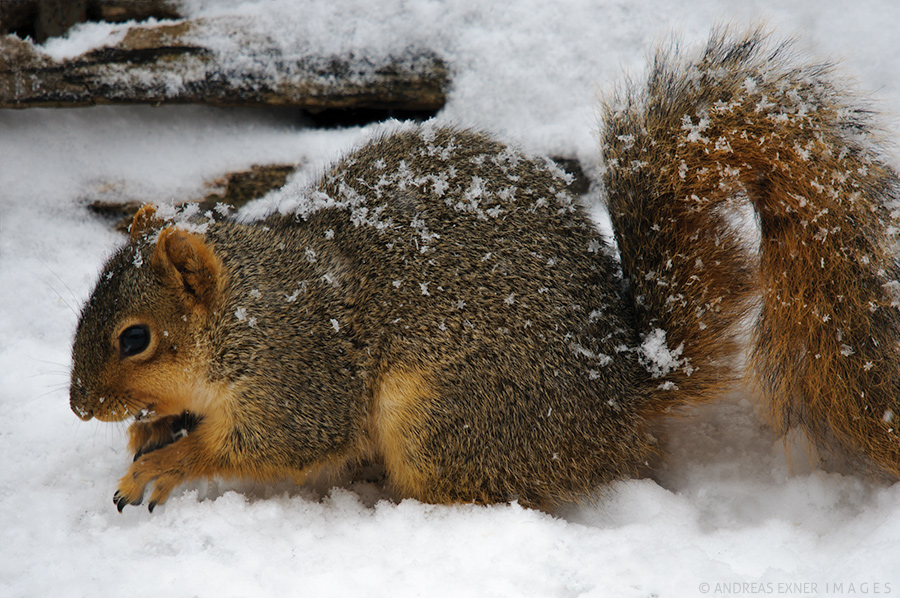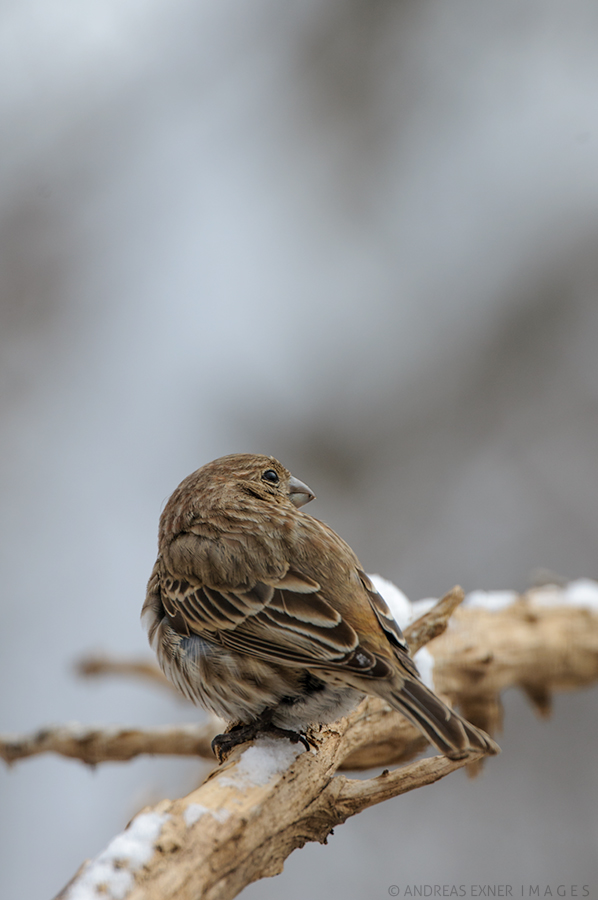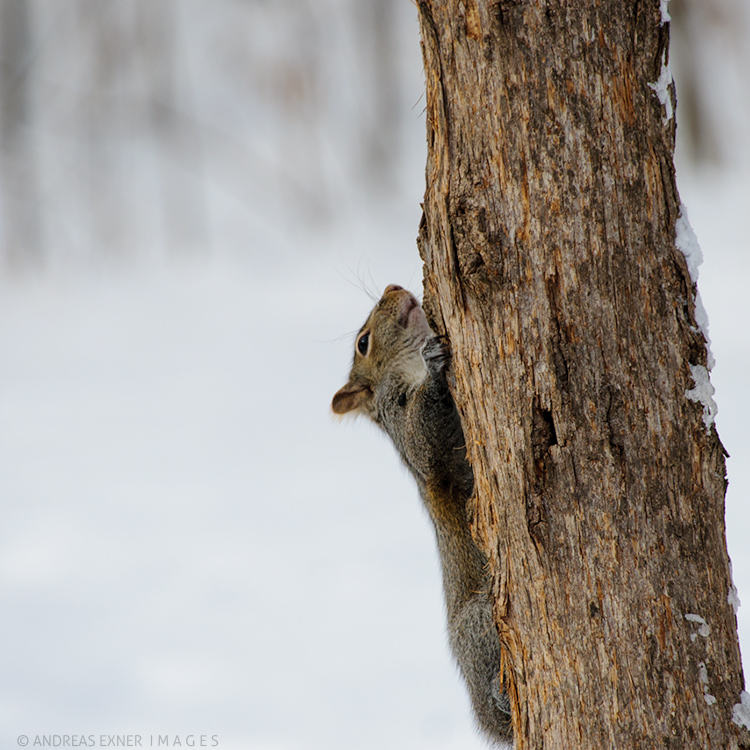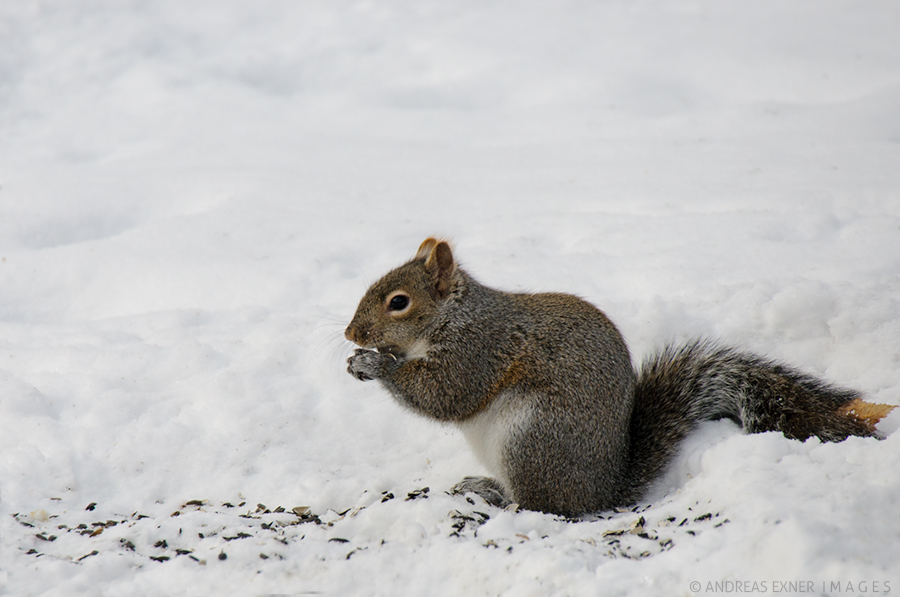I like to shoot wildlife pictures in my backyard or even on the balcony. We live in the woods and we see birds or other animals all year long. Especially in the winter, enhancing the color by using subtle fill flash makes sense. Famous wildlife photographer Moose Peterson uses a softbox for the same purpose on his balcony, and I actually learned about it on his blog. So, why not just do the same?
I began making plans to build my own softbox when I saw Larry Becker's very detailed tutorial on his blog "Larry Becker's Cheap Shots". This was exactly what I was looking for. He made his for the Nikon SB600 speedlight, the same that I use. I like to create things on my own but I'm all against inventing the wheel twice.

And here it is! I didn't change much. Found a nice guy in a sign shop here in town, who gave me a strip of black Coroplast for a few bucks that I used for the body of the softbox. At the moment I'm using a white report cover as a diffuser but I believe it swallows too much light. I will replace it as soon I find the frosted material that is a little more transparent. I didn't have gaffers tape, as recommended by Larry, but I used black vinyl electrical tape instead to cover all edges.

How does it work? First I did some indoor tests . The shadows turned out very soft, much better than with the bare flash. Last weekend I did some more testing on the balcony. It was bitter cold but that didn't reduce the fun I had waiting for birds and grey squirrels. The morning sun came very bright from the left hand side. The speedlight with the softbox mounted stood three feet to the right, 30 degrees tilted down, and pointing toward the bird bath. I had several good shots of the Tufted Titmouse and other birds. I liked this one in particular, because of how the flash made the trails of the water drops and the rising steam from the bird bath visible.

Exposing for the shadows on the right side of the Grey Squirrel would have blown out the highlights. The soft fill flash took care of that and without the flash being too obvious.
The softbox is very lightweight, folds flat, and fits easily in the computer pocket of my photo back pack. Taking it in the field will not be a big deal. Because it is my first softbox, more testing needs to be done but I already like what it does for my photography on the balcony. Check it out at "Larry Becker's Cheap Shots". He has more really good tips on inexpensive photography solutions. Thank you for this one, Larry!
August 2013: More images made with the softbox: Click HERE and HERE
December 2011: New post "Softbox out again", see HERE














